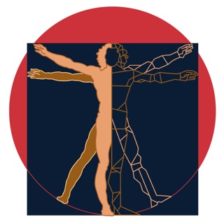Considering its theoretical nature, the study Cognitive Archeology continues to grow year by year as ideas on the evolution of cognition and as theories on the interpretation of thoughts and symbolic structures as perceived in past material culture continues to abound.
Despite the deluge of ideas on the evolution of cognition, most approaches have been “general” in nature. There has been general discussion on the classification of intelligence, it’s possible evolution and the possible causes of such, however, works identifying the specific neural substrates that is involved in the evolution of cognition has been rare.
This is of course understandable as the archeological record does not leave any evidence of brain re-organization and that there is no direct measure of behavioral change add to this is the fact that much of the brain continues to be shrouded in mystery. Despite all of these, nevertheless advances have been made in brain science which is further made possible by more sophisticated brain imaging equipment.
Taking advantage of more advanced technology, archeologist Dietrich Stout and Nicholas Toth, psychologist Julie Stout and Radiology Professor, Gary Hutchins introduced to the world of archeology a new experimental technique for examining the relationship between stone tool making and brain function. In the article entitled “Stone Tool-Making and Brain Activation: Position Emission Tomography (PET) Studies” published in the year 2000, they examined task related brain activity by assessing changes in regional cerebral blood flow during specific task through Positron Emission Tomography (PET). The result of their research indicates that during stone tool making, there was a heavy activation of corticol and subcortical regions of the brain associated with motor and somatosensory processing. Areas known to be involved with complex spatial cognition, which requires integration of diverse sensory inputs such as vision, and touch, were heavily activated.
In the same year Professor of psychology Frederick Coolidge and Cognitive archeologist Thomas Wynn started developing a model for the evolution of modern cognition based on the well-established concept of working memory. Their work was published in a series of articles on the subject matter and most importantly in the article entitled “Working Memory, its executive Functions and the Emergence of Modern Thinking” published in 2005.
The two works of Stout et al and Coolidge and Wynn highly complement each other as both emphasizes specific neural substrates that are possibly involved in the evolution of cognition.
In the work of Stout et al while stressing that they cannot simply concluded that
“ . . . the same neuronal fields and population activated by modern humans would necessary have been recruited in pre-modern hominid knappers performing similar task . . . ”, however they stress the possible evolutionary significance of the result of their findings considering that “ . . . It is interesting to note that the broad divisions of the brain recruited by an experienced knapper (Neocortex and cerebellum) in the current study are exactly those that have undergone the greatest expansion in hominid evolution. The more particular recruitment of superior parietal association cortex is further suggestive as the association cortex in general . . . is allometrically expanded in humans relative to the remainder of the neocortex. If these putative activation patterns are verified by further research, they will represent corroboration of the hypothesis that early stone tool technology played an important selective role in hominid brain evolution”
On the other hand, Coolidge and Wynn in the initial pages of their work gave a comprehensive discussion and laid the necessary groundwork for “Enhanced working memory” which they hypothesize was a result of a single additive genetic mutation of working memory, increasing its capacity. They base their theoretical framework of working memory on psychologist’s Alan Baddeley’s working memory model who identified the prefrontal cortex and other corticol and subcortical structures acting as the Central executive performing executive functions. The central executive works is supported by short term memory structures which are the episodic buffer (pre-frontal cortex) the phonological store (Left pre-frontal cortex, anterior temporal frontal areas and parietal cortex) and the visuospatial sketchpad (right pre-frontal cortex, parietal and occipital cortex) and long-term memory structures (Declarative long-term memory stored in cortex by the hippocampus and Procedural long-term memory)
Coolidge and Wynn then proceed how their theory of “Enhanced Working Memory” is demonstrated in the archeological record. They then presented evidence as seen in four areas, Technology, Foraging system, information processing system and the provocative case of the colonization of Australia some 60,000 to 70,000 years ago.
As a Christian scholar who holds to a Creationist perspective, my perspective on this matter is that of appreciation for the complexity and sophistication of the human brain as evidence of design, while maintaining a critical stance towards the evolutionary assumptions embedded in the research. Allow me to elaborate further on my perspective regarding this issue:
1.)Appreciation of Scientific Inquiry: The use of advanced imaging techniques like PET scans by Stout et al., and the theoretical development of working memory models by Coolidge and Wynn, showcases the remarkable advances in our understanding of brain function. These studies highlight the intricate connections between cognitive tasks, such as stone tool-making, and specific brain regions. From a Christian perspective, such complexity can be seen as a testament to the intelligent design inherent in creation, affirming the Psalmist’s declaration of being “fearfully and wonderfully made” (Psalm 139:14)
2.)Critique of Evolutionary Framework: While the findings on neural activity and cognitive functions are valuable, the interpretation of these findings through an evolutionary lens is less convincing from a creationist standpoint. The evolutionary narrative posits that such brain functions evolved through natural selection and mutations over millions of years. However, from a creationist perspective, these capabilities are viewed as part of the original, intelligent design by God at creation. The human capacity for complex thought, creativity, and problem-solving reflects the image of God in humanity (Genesis 1:27), rather than being merely the product of evolutionary processes.
3.)Theological Reflections on the Nature of Science: The research’s focus on how cognitive abilities might have developed over time contrasts with the biblical account, where Adam and Eve are created as fully functional, intelligent beings from the beginning. Thus, while the methodologies and discoveries in brain science are valuable for understanding how the brain operates, the presuppositions regarding human origins and development diverge significantly from biblical creationism.
4.)Engagement and Dialogue: Engaging with such research provides an opportunity for Christian scholars to dialogue respectfully with the broader scientific community, presenting alternative models that see science as a means to explore and steward God’s creation effectively. It also serves as a call to Christians in scientific fields to contribute rigorously and thoughtfully to ongoing discussions, ensuring that theological convictions about creation do not preclude an active and serious engagement with scientific methodologies and discoveries.
5.)Integration of Faith and Science: Lastly, Christian scholars should consider how the doctrine of creation informs and is informed by scientific inquiry. The integration of faith and science should lead to a holistic view that respects both the authority of Scripture and the insights provided by empirical research, aiming for a cohesive understanding that glorifies God and benefits humanity.
So while the evolutionary assumptions in the first part of this article indeed clashes with Christian scholarship, the research into the complexities of the brain is a valuable area for engagement, providing insights into the marvelous design of our cognitive faculties as part of God’s good creation.
 Hi ! my name is Zigfred Diaz. Thanks for visiting my personal blog ! Never miss a post from this blog. Subscribe to my full feeds for free. Click here to subscribe to zdiaz.com by Email
Hi ! my name is Zigfred Diaz. Thanks for visiting my personal blog ! Never miss a post from this blog. Subscribe to my full feeds for free. Click here to subscribe to zdiaz.com by Email
You may also want to visit my other blogs. Click here to learn more about great travel ideas.


Leave a Reply